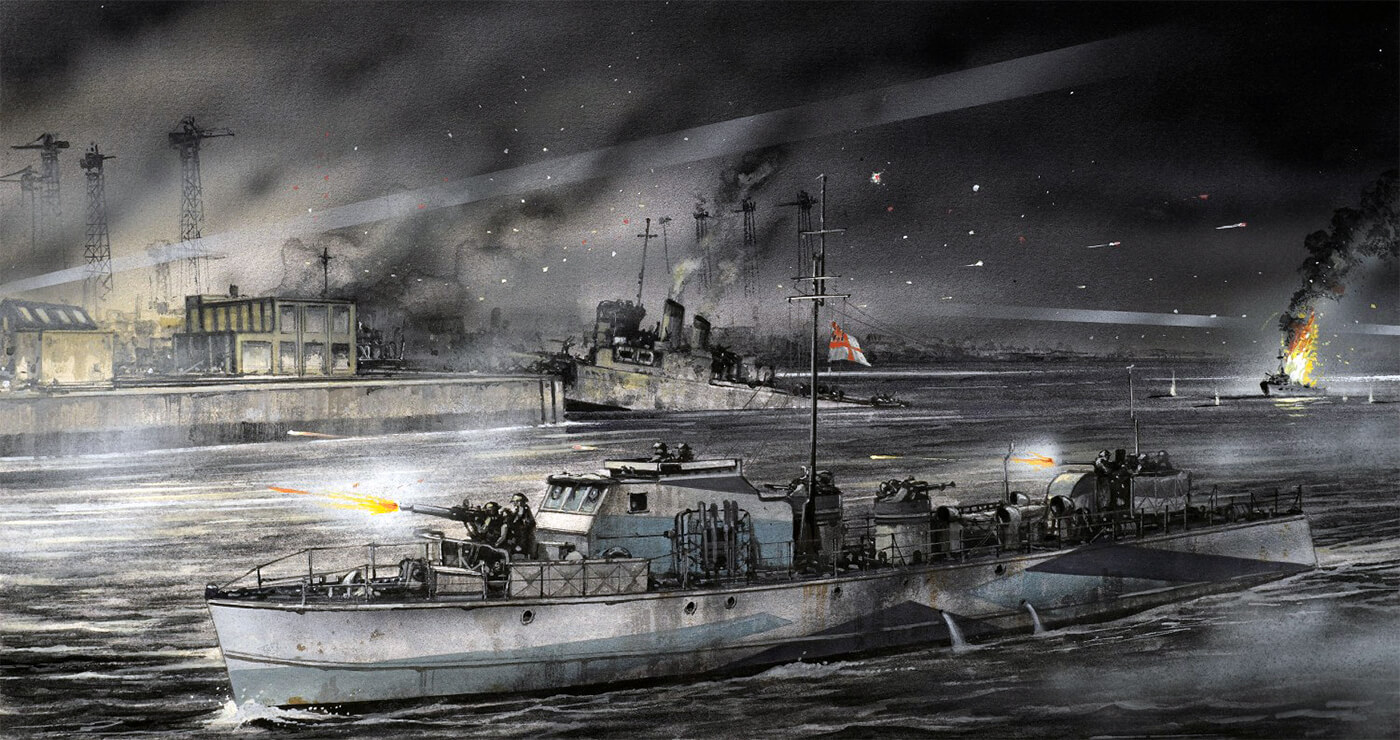| Special Forces Operations in August 1942 |
| August 7th, 1942 – August 8th, 1942 |
| Operation Watchtower, Capture of the Tulagi and Gavutu–Tanambogo Islands |
| 1st Raider Battalion, U.S. Marine 1st Parachute Battalion |
| 1st Raider Battalion, U.S. Marine 1st Parachute Battalion and support troops from the U.S. Marines. Initially, the plan focuses on Tulagi and the Santa Cruz Islands, but the discovery of Japanese airfield construction on Guadalcanal leads to its inclusion, replacing the Santa Cruz operation. Japanese signals intelligence detects the Allied movements but misinterprets their destination. The Watchtower force, including 75 warships and transports, assembles near Fiji on July 26th, 1942, and departs for Guadalcanal on July 31st, 1942. U.S. Vice Admiral Frank Fletcher commands the expeditionary force, with Rear Admiral Richmond K. Turner leading the amphibious forces and Vandegrift commanding the 16,000-strong landing forces, mainly U.S. Marines. On August 7th, 1942, poor weather allows the Allied force to approach undetected. The landing force divides, with one group targeting Guadalcanal and the other Tulagi, Florida, and Gavutu-Tanambogo. Aircraft from the U.S.S. Wasp bomb Japanese installations and destroy seaplanes. U.S. Marines land on Florida Island at 07:40 and on Tulagi at 08:00, facing minimal initial resistance. Japanese defenders on Tulagi, Gavutu, and Tanambogo prepare for a last stand. The Marines secure positions on Tulagi and advance against increasing resistance. Overnight, the Japanese launch five attacks, but the Marines hold firm. On August 8th, 1942, reinforcements help secure Tulagi. Marines assault Gavutu at noon, facing heavy resistance but eventually clearing Japanese positions. Tanambogo is attacked later, with Marines overcoming strong defenses and destroying caves. By August 9th, 1942, resistance on Tanambogo ceases. The battles result in significant casualties: 307 Japanese and 45 U.S. troops die on Tulagi, while 476 Japanese and 70 U.S. personnel die on Gavutu-Tanambogo. Several Japanese and Korean laborers are captured. |
| August 17th, 1942 – August 18th, 1942 |
| Raid on Makin Island |
| 2nd Raider Battalion |
| The raid on Makin Island aims to divert Japanese attention from Guadalcanal, disrupt reinforcements, gather intelligence, and destroy enemy facilities. Makin Island, particularly Butaritari, offers strategic advantages due to its dense vegetation and narrow land strip. The raiding force, Task Unit 7.15.3, consists of 13 officers and 208 enlisted men from Company A and B, led by Lieutenant Merwyn C. Plumley and Captain Ralph H. Coyte of the 2nd Raider Battalion. They depart from Pearl Harbor aboard the U.S.S. Nautilus and U.S.S. Argonaut, reaching Makin on August 16th, 1942. Early on August 17th, the submarines arrive at the debarkation point. Difficulties during unloading lead to a change in plan, with all boats directed to a single landing site, Beach Z. Despite some boats landing off-course, the troops manage to regroup and begin the operation unopposed until a rifle discharge alerts the Japanese. Company A secures Government Wharf and House by 06:00 but encounters heavy resistance along the lagoon road. Reinforced by Company B, they overcome Japanese defenses. The arrival of Japanese ships in the lagoon is neutralized by the submarines’ deck guns. The battle intensifies with aerial attacks. Carlson, the commanding officer, attempts to lure snipers but faces continued resistance. Despite a final intense bombing at 16:30, the raiders can’t capture prisoners or destroy key facilities. Withdrawing at 19:30, they aim to preserve their forces. 19 Raider Marines were killed in action during the raid. |
| August 19th, 1942 |
| Operation Jubilee |
| Commandos, U.S. Army Rangers |
| Canadian 2nd Infantry Division, 14th Army Tank Regiment (The Calgary Regiment (Tank)) and British No. 3 Commando, No. 4 Commando (50 U.S. Army Rangers), No. 10 Commando, No. 30 Commando, No. 40 Commando. Their mission is to capture and occupy for a brief period the port town of Dieppe, to test the feasibility of a landing and to gather intelligence. Before leaving, the invasion force, must destroy the German coastal defences, port structures and important buildings. |

